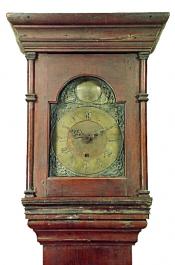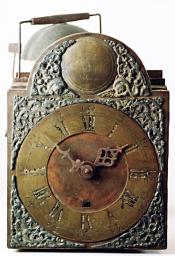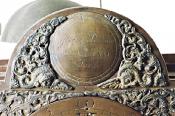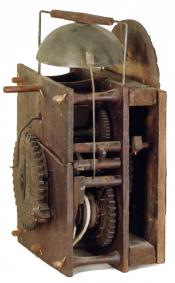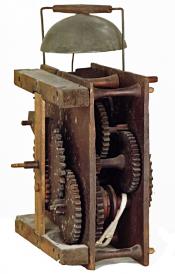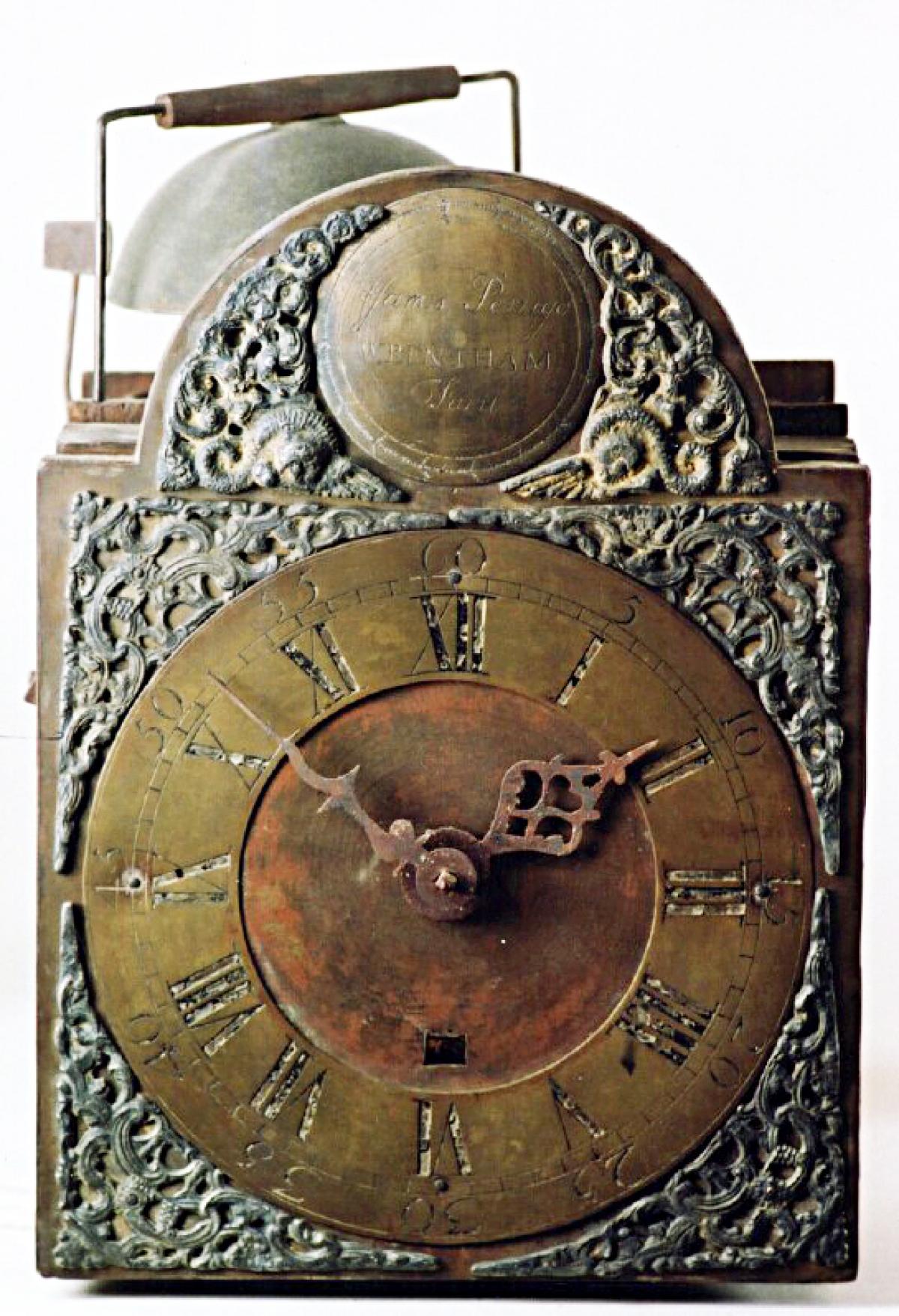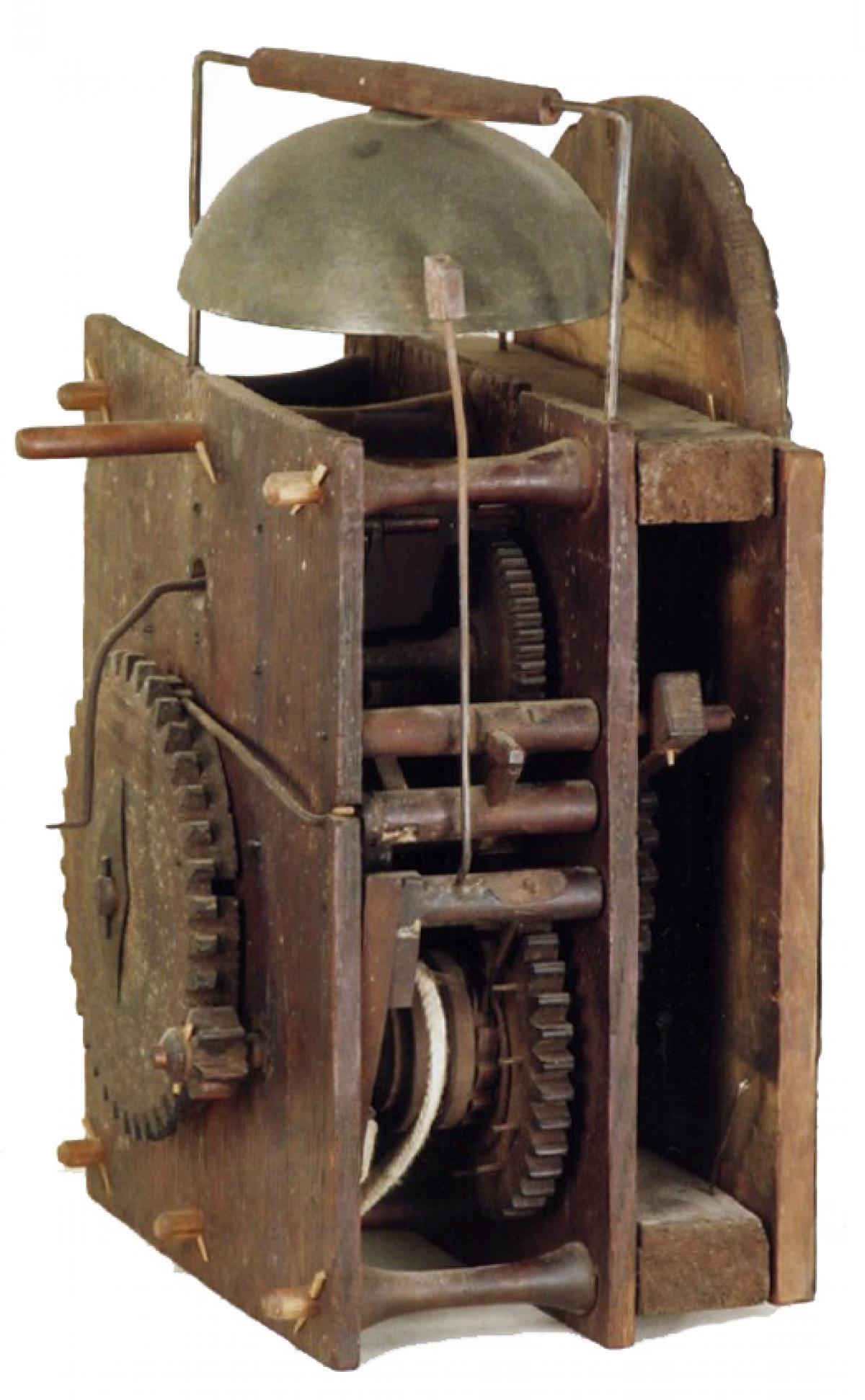James Perrigo Sr, of Wrentham, Massachusetts. A primitive tall case clock. Wooden gears. AA-77.
Wooden geared clocks are traditionally formatted as a thirty-hour design. This example is constructed in wood, having large oak plates that are joined together with six turned and tapered wooden posts. The pendulum is actually supported by a post centrally located at the top of the movement. The strike train is actuated by the large count wheel that is mounted on the backplate. The lifting arm is mounted on the front plate. This clock will strike each hour on a cast iron bell that is mounted above the movement on a stand. Please note the size and shaping of the robust gearing. It is fun to compare the size and shape to the standard thirty-hour wooden geared clock movements made some 60 years later in Connecticut. This version is a gear heads dream machine. This movement is powered by weights that hang from ropes. These are set up as a direct drive. It is a two-train design. This clock is also fitted with a simple calendar.
The arched dial is wonderfully constructed. A thin brass sheet is applied or tacked to a thick wooden pine board for support. The center area, the area within the time ring, is matted or textured. Here, one will also find a small square opening that displays the calendar day. The time ring, name boss, and decorative spandrels are applied to the brass sheet. The spandrels are cast from pewter, and remnants of the original gilding are present. The time ring features Roman-style hour numerals, Arabic-style five-minute markers, and a closed minute ring. The two hands display the time. A name boss is mounted in the arch of the dial. It is engraved with the Maker's name, "James Perrigo." This is executed in a script format. His working location of "WRENTHAM" is written in large block lettering. "Fecit" is written in script and located in the boss's bottom half. This dial measures approximately 10 inches wide and 13.5 inches tall.
This cherry case exhibits classic Queen Anne-style moldings and excellent narrow proportions. This case is supported on an applied molding that rests flat on the floor. The base section is somewhat compressed by today's standards. However, the moldings that transition the base to the waist and the waist to the hood are robust and nicely shaped. The waist section is fitted with a long tombstone-shaped waist door. This door is trimmed with a simple molded edge. A lenticle is positioned in this door at the height of the pendulum bob. This allows one to view the motion of the pendulum bob when the clock is operating. The bonnet features a flat top cornice. The moldings are excellent. The bonnet door features an arched opening fitted with glass to protect the dial. Fully turned bonnet columns are applied to the door.
This clock was made circa 1758. The overall height is 89 inches tall.
Inventory number AA-77.
James Perrigo Sr. was born in Stoughton, Massachusetts, on 27 April 1737 and died there on 18 December 1808 at the age of 71. He was the son of James Perrigo and Lydia (Hayward) Perrigo of Bridgewater, MA. His second wife was Elisabeth Dickerman Perrigo, on 20 January 1757. He may have been Massachusetts' earliest wooden geared clockmaker, and it is thought that he may have been at work as early as the late 1750s. His house was located on Main Street and still stands there today.


